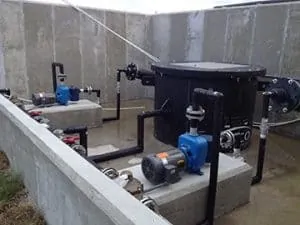

It is not out of the ordinary to see several different landfill designers providing services at a specific site over many years. Each landfill designer brings his/her preferences and designs to the owner, depending on the urgency of the projects and the owner’s willingness to accept new concepts.
Experienced landfill designers review the prior history of design work at the facility and ensure that their new design work is compatible with previously developed cells and final covers. Lack of such due diligence could impede landfilling operations following implementation of the design with implications that may survive for many years to come at a high cost to the owner.
Proper due diligence may reveal issues that the owner may not be aware of. In such cases, the new landfill engineer attempts to explain the observed issues from a previous design to the owner’s attention during one or more meetings or through a narrative report including documentation of the issues and measures to address each issue. The owner may accept or reject the technical matters brought to their attention by the new landfill designer. If accepted, authorize the new design engineer to prepare proper plans and details, and assist in retaining a contractor to fix noted problems. If rejected, the new landfill engineer can feel confident he/she is professionally conducting himself/herself considering the ethical obligations in his/her profession.
If the new landfill engineer had not brought up issues discovered during the due diligence, the owner could blame the new designer claiming that he/she should have known better. Such situations do not get resolved easily and could lead to another change in the design team.
The cost of performing thorough due diligence may not be in the first task order’s budget. However, it will certainly pay off over time with back-to-back task orders from the owner when confidence n the designer’s capabilities build over time.
Changes to the landfill personnel may occur similar to any other organization. Landfill general managers, operation managers, site engineers, or compliance engineers may leave, and the position filled by a new person who has no site familiarity or history. These types of rotations can provide the opportunity for inexperienced landfill designers to influence the site’s long-term plans. Mistakes by inexperienced designers can last decades in some instances, while new and remaining personnel must deal with the consequences.
SCS’s project management protocols require project managers to constantly learn about the site’s history and review documents representing the backbone of the facility development over the long-term life of the site to the present. This type of continual learning of important matters and minute nuances of the site history equips a project manager to address technical and permitting issues based on knowledge of prior work performed at the facility. Implementation of new ideas based on prior knowledge of the site history is considered the backbone of properly managing projects and serving the client in consideration of their business priorities.
Past knowledge comes from documents prepared by prior designers and knowledge of site personnel who have been working at the site for a long time. Competent engineers welcome opportunities to interview and discuss site history, especially with long-term site personnel. The knowledge these people carry with them is not found in any document that the designer, if lucky enough to get his/her hands-on, may obtain by review. The knowledge of the changes to existing systems during original construction and a later date, which may not have been documented, can lead the engineer to concepts that otherwise would not have been envisioned without the long-term employee’s information of the site.
About the Author:

Equipped with wheels, the pumps roll down the riser pipe positioned in the horizontal portion of the pipe at the bottom of the sump. A discharge line from the pump extends up through the riser pipe, and after exiting the riser pipe at the top of the berm, connects to a leachate force main in the perimeter berm.
Maintenance of Submersible Pumps
To access the pump, the entire pump assembly, including the power cable connected to the pump, level control leads, discharge line, and the pump is removed from the riser pipe. The entire pump assembly is usually soiled with leachate and slime sticking to pipes, lines, and the pump while submerged.
Depending on the depth of the landfill from the top of the perimeter berm, the discharge lines could be long. A technician is handling the extraction of a long and heavy pipe, connected to a heavy pump at the lower end of the pipe to extract it from the rise pipe may have trouble.
Maintenance Technicians
A well-trained maintenance technician, particularly in the safety aspects involved in submersible pump maintenance is necessary. When removing a submersible pump for maintenance, having more than one technician is safer, and could be more cost-effective. Environmental aspects of maintenance work are also important, for example, the structure located at the top of the berm, where the riser pipes and leachate piping are located, should remain watertight. Otherwise, during maintenance, the liquids generated will escape into the berm structure and the environment.
Self-Priming Pumps

Self-priming pumps come in all sizes, are less expensive than the submersible pumps, and install easily inside the structure at the top of the perimeter berm using a 2-inch line extended to the bottom of the riser pipe for leachate removal.
Maintenance of self-priming pumps is significantly less cumbersome than submersible pumps. One technician can handle replacement or maintenance of the pump in a shorter period. The work is not necessarily as dirty a job either, because the technician is not handling significant amounts of leachate and slime.
Self-priming pumps are designed to prime easily after each maintenance session. On the pump is a check valve on the intake, and another near the bottom of the leachate removal pipe. The check values prevent any liquid inside the pump and the pipe from flowing back down to the sump when the pump is off. This benefit also prevents the need to prime the pump when it cycles back on.
Self-priming pumps are useful for double-lining systems equipped with a secondary sump and a primary sump. In areas where freezing conditions occur, the pumps can be used as long as the pumps, and the exposed piping is located inside an enclosed housing to prevent frost damage.
I’ve used self-priming pumps in applicable designs with sufficient performance. Even when utilized in very large pumping networks the results are as good. Testimonials from my clients regarding ease of maintenance and lower capital costs for system construction are positive.
After more than 20 years, that’s a good track record for continued use in the future.

Ali Khatami, PhD, PE, LEP, CGC, is a Project Director and a Vice President of SCS Engineers. He is also our National Expert for Landfill Design and Construction Quality Assurance. He has over 40 years of research and professional experience in mechanical, structural, and civil engineering.
Despite the fact that you have taken every precaution, hitting utility lines or other hidden infrastructure is still relatively common. Even after all the records are consulted and metal detector tests completed, you can dig up an entire storage tank that wasn’t accounted for or find a random pipe with no apparent usefulness.
Having a tool that can get you down there without damage is a significant benefit to those in the field. SCS recommends using the Hydrovac or Air Knife technologies, tools that can save money and time when working on sites with sensitivities or a longer historical background when the risks are highest.
SCS uses these tools when drilling at a transfer station near older or deeper power lines. We find utilities can be buried deeply below ground or are not encased in metal pipes, making metal detectors useless.
When remediating a historic property for developers with nearby utility lines and there’s a question about the accuracy of the records, it is far safer and cost efficient to use these newer technologies to dig a hole as small as for setting a mailbox, or as large as digging an entire site for construction.
The Hydrovac and Air Knife will both remove soil cover and allow you to see any underground utilities or infrastructure before excavation or drilling. The Hydrovac uses pressurized water and a vacuum system to remove soil. The Air Knife accomplishes the same thing using compressed air instead of water.
SCS Engineers can provide a range of equipment sizes and capabilities including:
By Thomas Karwoski and Sherren Clark
About the Authors:


Links to SCS Services: CCR, Landfill, and Remediation pages.